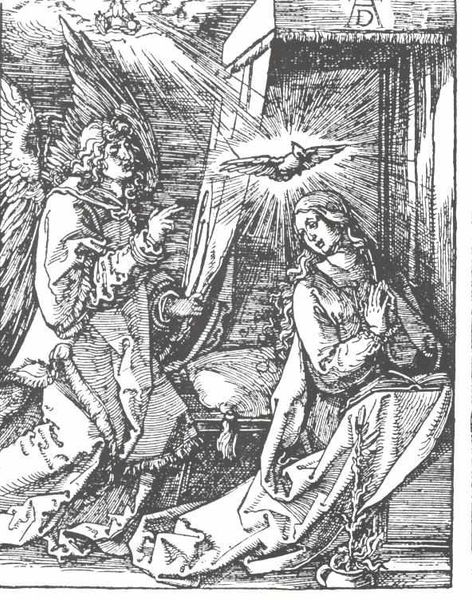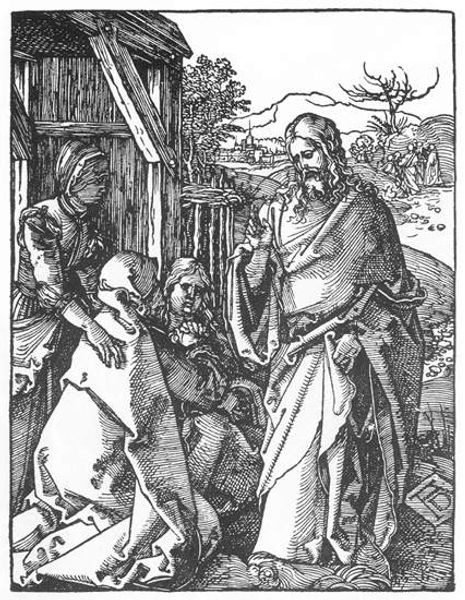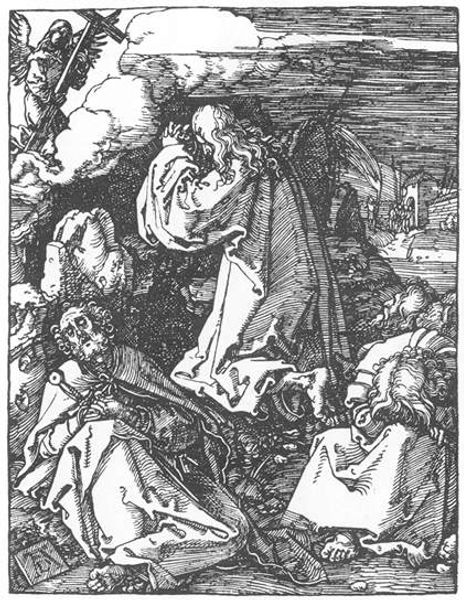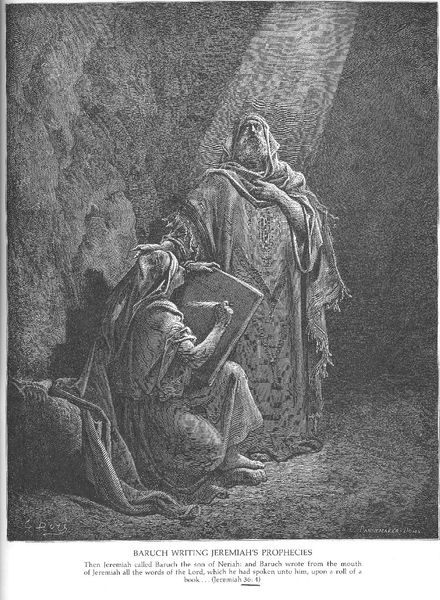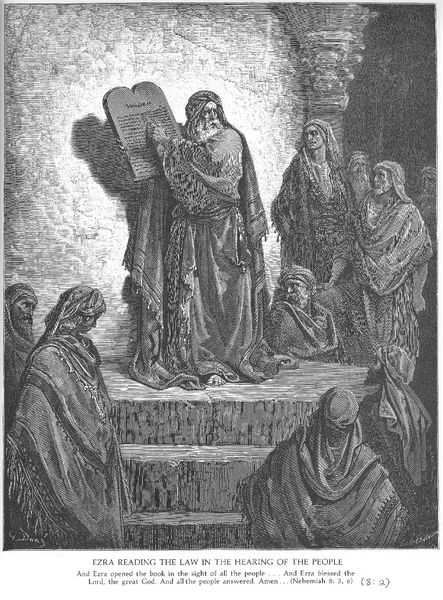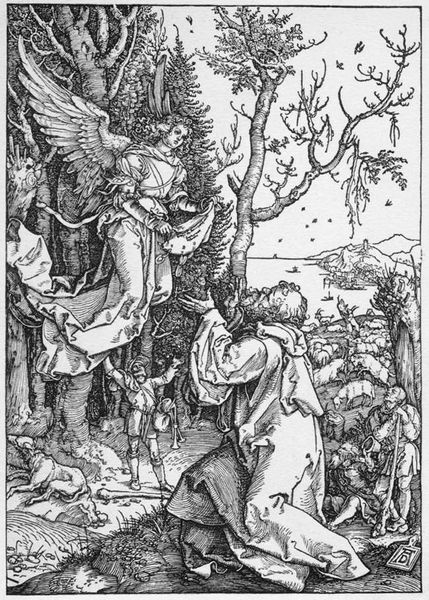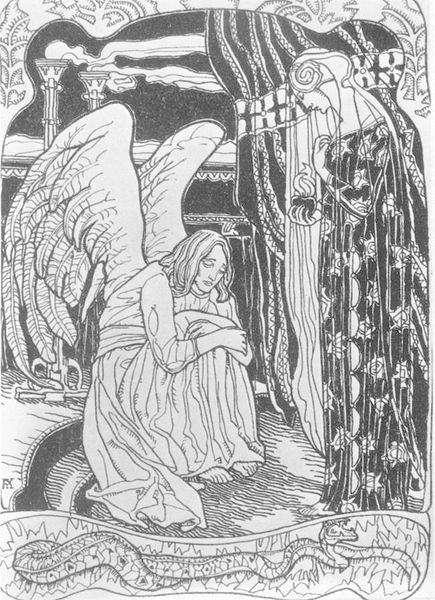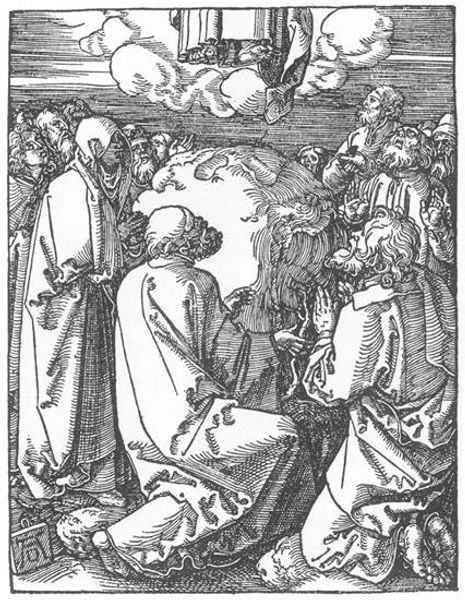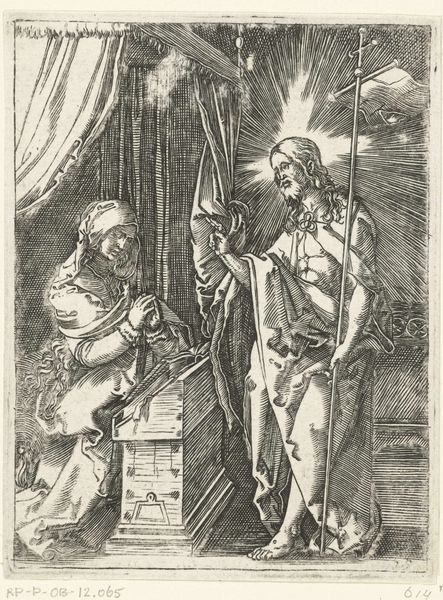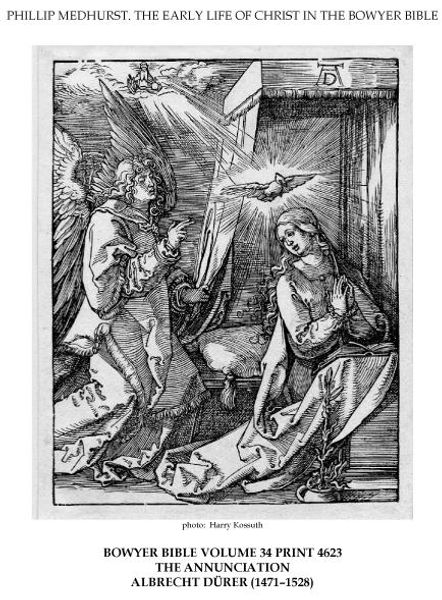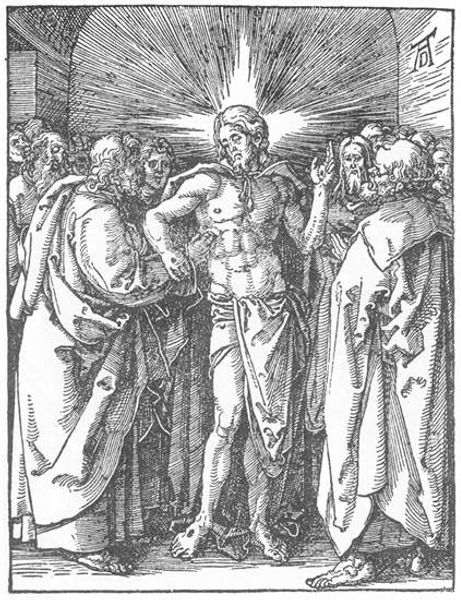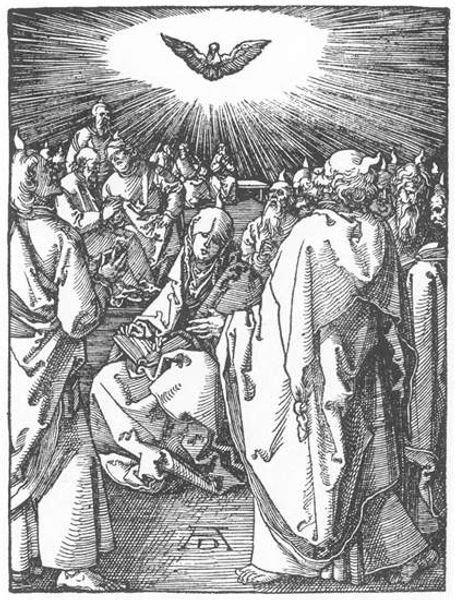
drawing, print, ink
#
portrait
#
drawing
#
narrative illustration
#
narrative-art
# print
#
jesus-christ
#
ink
#
christianity
#
northern-renaissance
#
christ
Copyright: Public domain
Editor: Albrecht Dürer’s print, "Christ Appears to His Mother," made in 1511, presents a very intimate scene despite the grand subject matter. What strikes me most is the detail in the lines, especially considering it's just ink on paper. What do you make of it? Curator: Well, let's think about what ink and printmaking allowed Dürer to do. Printmaking was a revolutionary means of production. Think about it – this image could be replicated and distributed widely, bringing religious iconography to a new market of consumers beyond the traditional patrons of painting. Editor: So it's less about the specific religious context and more about how accessible he made this imagery through the materials and method he used? Curator: Exactly! And consider the labour involved. Dürer had to be a skilled draughtsman and craftsman. He isn't just creating art; he is manufacturing and distributing a product, impacting the socio-economic landscape. Do you see any potential class tensions being addressed through this image? Editor: I do now. The narrative illustration gives accessibility to spiritual figures to commoners that might otherwise have not been able to imagine. That’s interesting, something I hadn't initially considered! Curator: Seeing it this way challenges traditional boundaries of what constitutes "high art," forcing us to acknowledge the labor, materiality, and consumerism intertwined within. Editor: It definitely changes how I view Dürer and his artistic choices. I’m now also intrigued by the lines and textures: were they simple means of portraying the narrative, or where they influenced by the production and printing process? Curator: Great question! Material conditions deeply inform aesthetic choices. It also reminds me how artistic mediums influence perception and even our cultural consumption.
Comments
No comments
Be the first to comment and join the conversation on the ultimate creative platform.
